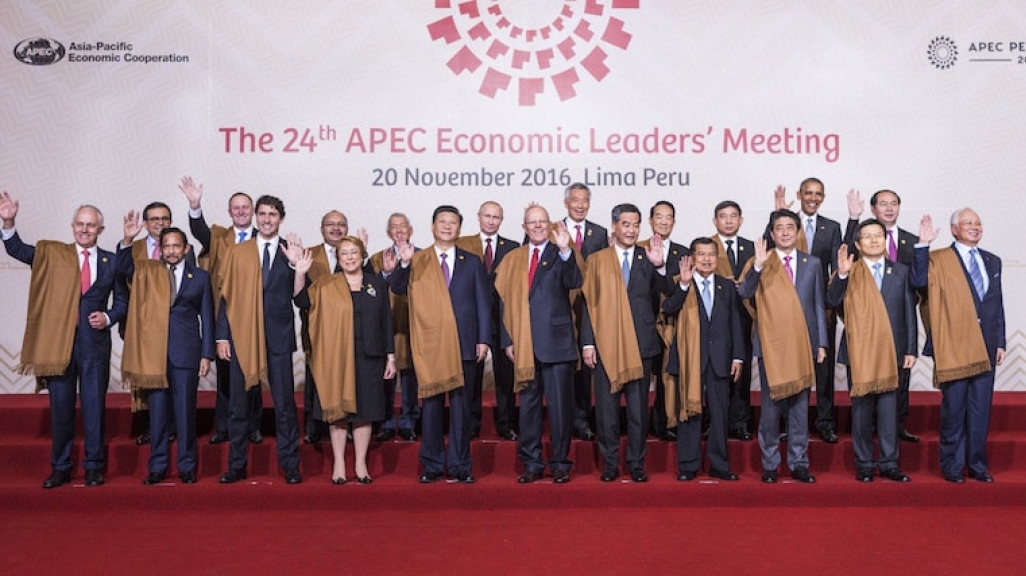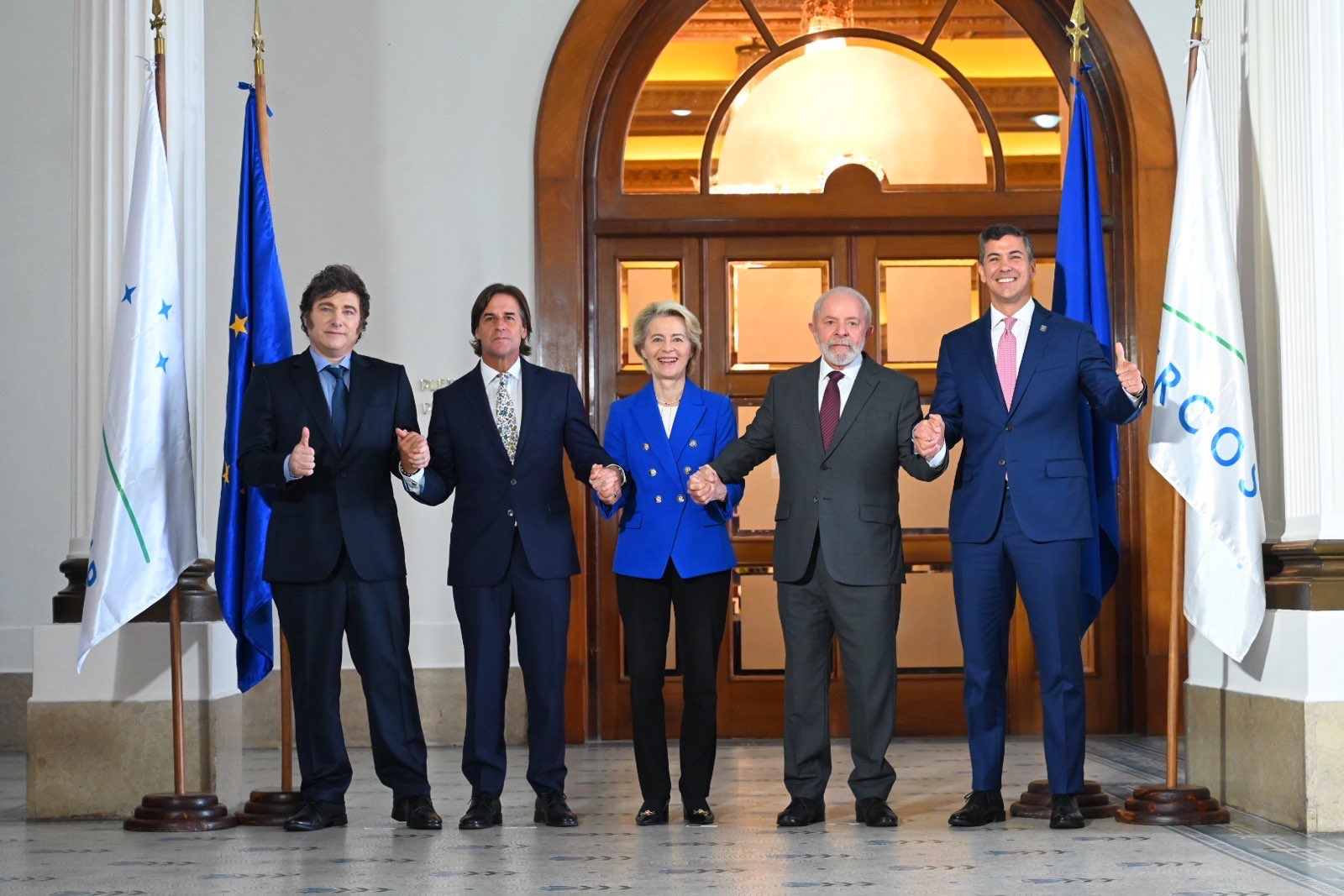Viewpoint: Eric Farnsworth on APEC's Pivot to China
Viewpoint: Eric Farnsworth on APEC's Pivot to China
Just back from Lima, AS/COA’s vice president shares his views on what’s ahead for the Asia-Pacific bloc as it prepares for a more protectionist Washington.
Less than two weeks after the U.S. election, leaders of the Asia-Pacific Economic Cooperation met in Lima on November 17 and 18. U.S. President-elect Donald Trump may not have attended, but his win cast a shadow over the APEC summit, as the 21-member bloc considers how to prepare for the potential of a more protectionist Washington once he takes office in December.
AS/COA Vice President Eric Farnsworth shared his on-the-ground perspective after attending the summit, including the fact that “Chinese President Xi Jinping stole the show as the ground appears to be shifting in real time toward a more proactive, consequential regional agenda for China.”
Peru is U.S. President Barack Obama's final foreign destination as president. What is the significance of that? What was the key message he brought to the table at APEC?
The president’s final meeting in Latin America was envisioned to be both a valedictory of his administration’s efforts in Latin America and the Asia-Pacific region as well as an important opportunity in front of the international community to promote passage of the Trans-Pacific Partnership (TPP), his signature trade and economic initiative for the region. Elections on November 8 substantially undercut this narrative; since then, the TPP has been shelved for the indefinite future. Meanwhile, in Lima, Chinese President Xi Jinping stole the show as the ground appears to be shifting in real time toward a more proactive, consequential regional agenda for China.
Canadian Prime Minister Justin Trudeau and Mexican President Enrique Peña Nieto spoke on the sidelines of the summit. Given the incoming U.S. administration's criticisms of the North American Free Trade Agreement (NAFTA), how are these two leaders responding and what could it mean for their bilateral ties?
This will be one of the more interesting relationships to observe in the months ahead. The two nations are natural partners within North America but have traditionally been more focused on their common neighbor.
|
"Given apparent U.S. reluctance to move ahead now in the same way, other APEC nations are certainly going to take a look at enhancing their links with China." |
Circumstances may be changing. The Canadian government has lifted visa requirements for Mexican travelers, eliminating a significant diplomatic obstacle. Meanwhile, their common economic and political interests vis-à-vis Washington are likely to bring Ottawa and CDMX closer than they have traditionally been, as they look for ways to leverage each other to promote North America as an integrated economic space, where cooperation is mutually rewarding and advantageous for competitiveness in the global economy. They will also be able to compare notes and, as appropriate, coordinate positions to the extent the incoming Trump administration moves ahead with the president-elect’s promises to renegotiate or even abrogate NAFTA. The meeting of the two leaders in Lima was clearly another step in this direction.
The future of the Trans-Pacific Partnership seems far from sure, between anti-trade talk during the U.S. electoral race and remarks from U.S. congressional leaders that the deal "is dead." Given that fact, how do APEC leaders see the path forward for trade accords along the lines of the TPP?
The indefinite delay and perhaps complete demise of TPP is a self-inflicted strategic setback for Washington in the Americas and also Asia. Now the question for the non-U.S. parties to the TPP is whether and under what conditions would they agree to modify the agreement to suit a more economically nationalistic United States, or, alternatively and more likely, whether and under what conditions they would agree to move ahead without Washington.
Of course, they may simply decide to walk away from the agreement altogether and focus elsewhere. Other potential vehicles for region-wide integration exist, namely the Free Trade Area of the Asia Pacific (FTAAP), which gained new life in Lima with the support of China’s Xi. Non-Latin American APEC nations will also likely advance their discussions with China for the Regional Comprehensive Economic Partnership (RCEP), a Chinese initiative which does not include the United States.
Beijing has been a rising player when it comes to trade with Latin America. What was China's perspective at this APEC summit? How will Beijing redefine its role?
Xi Jinping was very clear: China wants to preserve the open economic system in the Asia-Pacific region and will work toward that goal. He invited the nations of the Western Hemisphere to join in this effort, implicitly seizing a leadership role. Given apparent U.S. reluctance to move ahead now in the same way, other APEC nations are certainly going to take a look at enhancing their links with China—a process that has already begun.
Peru has a new president, Pedro Pablo Kuczynski, who supports open markets and hosts this summit at a crucial time. What has this summit meant for his and Peru's leadership on a regional and international level?
Peru is perhaps Latin America’s best-kept secret, or at least it was until Lima’s hosting of the APEC leaders’ summit allowed outside observers to take stock of the reforms underway. Years of robust economic growth are making a meaningful impact and the president is keen to keep the momentum going, in part to allow him to deliver on his political promises for social development and broad improvement to the quality of life in Peru. To do this, his and other commodities-based economies in the region depend on open global markets. Hosting APEC was both acknowledgment of progress and also an important opportunity to promote the open markets agenda that has proven so important to Peru’s success.









